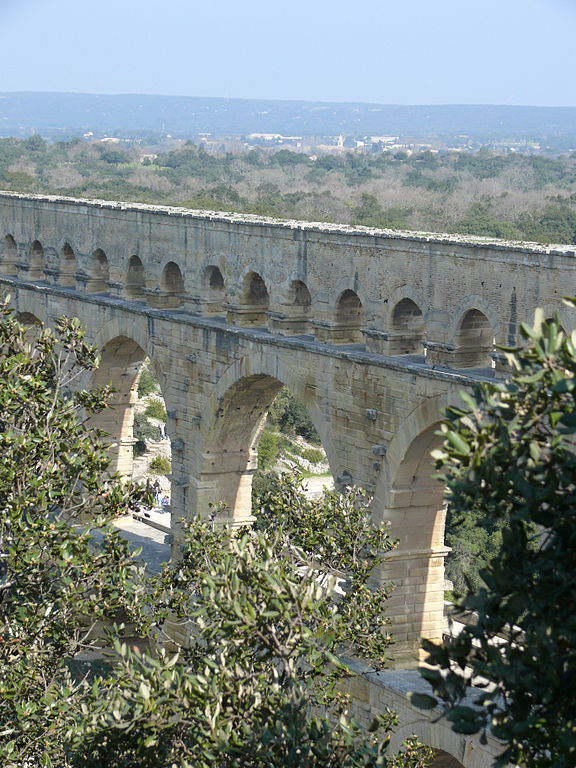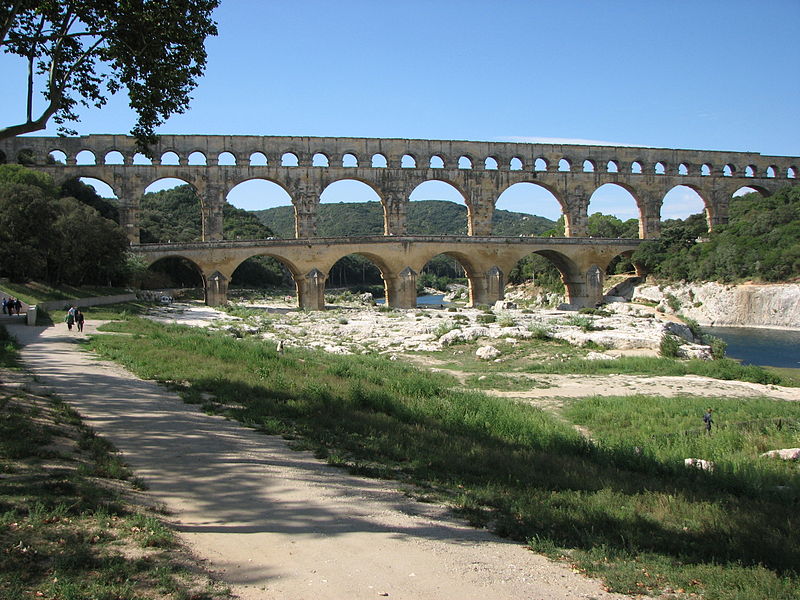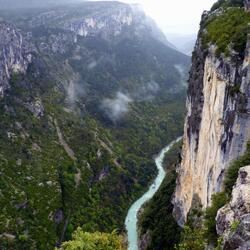Aqueduct Pont du Gard
The Pont du Gard Bridge is an architectural structure that has come down to us since ancient Greek times. The aqueduct was built by the ancient Romans for domestic needs, namely for the installation of a water pipeline that led its way through the Gar River. This architectural landmark belongs to France and is protected by UNESCO.

The aqueduct has a height of 49 meters, and its length reaches 275 meters. This huge stone building formed part of the entire large aqueduct system, which stretched for 48 km. from the city of Usesa to the city of Nimes.
The aqueduct has an inscription, which scientists interpret as the year of its construction. According to this inscription, the Pont du Gard Bridge was built back in the 19th year before our era. But modern research says that the construction of the bridge was launched in the l century AD. Some of the stones of the bridge have been preserved to our time by inscriptions made by ancient builders.

The Pont du Gard Bridge consists of arcades, which are arranged in three tiers. The upper tier of the bridge is the largest and accommodates 35 arches, the middle tier has 11 arches, and only six large arches can be counted in the lower tier.
The huge blocks of the bridge are made of stone without mortar and cladding. The water in this area holds a large amount of mineral salt, which eventually accumulated at the bottom of the water pipe. The aqueduct was used for its intended purpose until the 9th century, but its further operation was not possible, since its walls were covered with a layer of solid deposits, and the entire system failed.
In the 17th century, the lowest level of the bridge was equipped for a highway. The second tier was intended for pedestrians. Nowadays, of course, traffic on the bridge is prohibited.
The Pont du Gard Aqueduct, as a medieval architectural structure, attracts many tourists from different countries. Beaches are located near the aqueduct, and tourist routes have been developed. There are places for travelers to relax, where cozy cafes are located.









